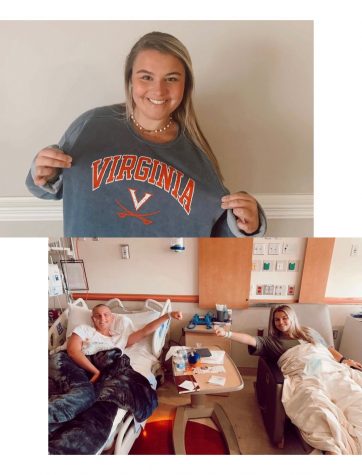The Great Pacific Garbage Patch
The Great Pacific Garbage Patch is a growing environmental topic in today’s news. The Patch is located between California and Hawaii and is the largest trash vortex in the world.
When asked about the Patch, Hallie Friedman and Elena Duncan, both from the class of ‘19, said that we can all help the Patch not grow any larger than it already is by disposing of trash properly, which only comes with people becoming more responsible with their waste. They explained the effects of the Patch on the marine life, the people, and the economy, all of which are negative and feed off of each other. The effects on the marine life said by both Hallie and Elena are that “the sea animals are dying due to getting caught in the trash or eating the microplastics” and the effects on the people are that we are “eating the fish that could potentially have these microplastics within them” making it “unsafe” for humans to eat. The Patch also makes that area of the ocean “unharvestable” for fishing industries, thus losing money and possibly jobs which harm the economy.
Hallie and Elena both agreed that some of their trash could have made it to the Patch, but not as a direct result of their actions, but due to others not properly disposing of the trash. When asked if they would get involved with helping in the cleanup of the patch, Hallie said she would “donate money” to help with cleanup, and Elena said she “would like to help hands-on, but realistically she would probably donate.” Lastly, when Hallie and Elena were asked about System 001, the trash collecting system created by scientists to retrieve up to 50% of the trash from the Patch in 5 years, both said the system will be “very effective”, and Hallie continued her statement saying “as long as the scientists are correct with their calculations.”
After talking with Jared Gordon (‘19) about the Great Pacific Garbage Patch, I got insight into his thoughts concerning the Patch. Jared says, “We need to stop throwing our garbage into the oceans and other bodies of water, and we need to work on removing what’s currently out in the oceans.” He explains that “the fish are being affected once they eat the plastics, where it then slowly moves up the food chain into the larger fish.” He is also aware that “people depend on fishing as part of their lifestyle,” making the fact that the fish are becoming contaminated with these plastics a harmful factor for people’s jobs and the economy. Jared said he would like to get involved with helping the clean by donating, and he believes that system 001 will be “pretty effective” even though it’s very expensive. Therefore other solutions could come into play to “help with the end goal” of removing the plastics from the Pacific.
